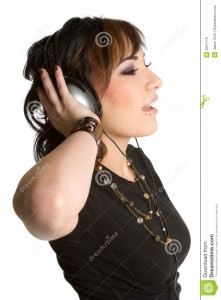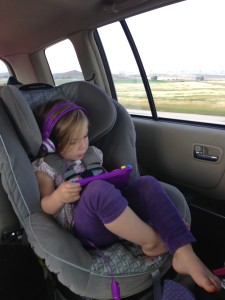Hearing Loss in the Silent Generation: Even without Ear Buds
Hearing loss was part of my childhood. Both my parents lost their hearing in their 40s. My mother’s early dependence on hearing aids was attributed to working in a laundry for twelve hours a day at age 14 followed by factory work during World War II; my dad’s to active service as a tank bomber and a career in cabinet making that put him in close proximity to electric saws and drills for the rest of his working days. Their quality of life was seriously impaired by these injuries, and so were their relationships with all of us.
In 1981, OSHA implemented requirements to protect workers in general industry (e.g. the manufacturing and the service sectors) for employers to implement a Hearing Conservation Program when workers are exposed to a time weighted average noise level of 85 dBA or higher over an 8 hour work shift. Hearing Conservation Programs require employers to measure noise levels, provide free annual hearing exams and free hearing protection, provide training, and conduct evaluations of the adequacy of the hearing protectors in use unless changes to tools, equipment and schedules are made so that they are less noisy and worker exposure to noise is less than the 85 dBA. In my view, this is a great thing.
Hearing Loss and Earbuds
But here we are in 2015, and wherever you go, there are people, young and old, with earbuds and ipods or iphones or some other version of MP3 players, bounding along to the beat of the music . . . very likely at a volume damaging to their inner ear.
Researchers have documented that the risk of permanent hearing loss can increase with just five minutes of exposure a day to music played through ear buds at full volume. They tell us that over time, the noise can damage the delicate hair cells in the inner ear that transform sound waves to the electrical signals that the brain understands as sound.
But what do teenagers do when told this? Just what you’d expect — they crank up the volume. “Go figure,” wrote Alice Parks in a 2009 Time Magazine article. “But that’s what Cory Portnuff, an audiologist at Colorado who began studying iPod-related hearing loss in 2006, discovered.” His small study found that teens not only tend to play music louder than adults, but they are often unaware of how loud they’re playing it.
Loud sounds can damage your ears. Typically, any sound louder than 85 decibels (dB) is considered dangerous to your hearing. Sound levels above 120dB may actually cause pain. When using earbuds, the audio is transmitted directly to the ear canal. This proximity reduces the amount of sound that escapes, thus increasing the loudness. Unfortunately, many youngsters increase their earphone volume in an attempt to get better sound, or to block out external noise. If a youngster’s ears are routinely subjected to loud noise for extended periods of time, they begin to adapt. This adaptation may lead them to further increase the volume, and risk even further damage to their hearing.
Articles that I read on earbud safety recommend levels from 70 to 85 decibels, which is difficult to measure on a typical device volume scale. One article recommend setting the volume control to no more than a third of the way up the scale for prolonged use. Half the total volume was considered ok if it was only cranked up for a short time. A conservative recommendation, difficult to swallow for many music lovers, is 60/60: 60 decibels for no more than 60 minutes a day.
Teaching Audio Safety to the Alpha Generation
How can parents and grandparents help youngsters avoid hearing loss from earbuds?
One effective way is to teach safe audio practices to very young children, years before they begin to use ear buds. Today it isn’t unusual for 15-20 month old children to be listening to music, stories, and cartoons through headphones. Fortunately, headphones designed for children of these ages have maximum volume control devices available that parents can set to a safe level. I searched Amazon for children’s headphones and found several with excellent reviews, mostly from parents who wanted to control the level of sound and who were pleased with the results.
But simply setting the volume control to a safe level is not enough. It’s important that we explain what we are doing and why. In the same way that we explain why we wait for a red light to change to green, why we eat green vegetables, and why we need to brush our teeth, it’s important to explain that it’s important to protect our ears from overly loud sounds. It is the repetition of the lesson that makes the difference in the long run.
I had a chat with my daughter about this yesterday. She told me that it wasn’t much of an issue in their house, because my granddaughter usually listens to books and programs on her iPad without the use of headphones, and that they negotiate the volume based on its interference with normal conversation between others who are present. On the rare occasions when Bean does use a headphone, such as on airplane trips, when other people are visiting, or when she accompanies one of us to a meeting, the maximum volume level is controlled by the adult in charge with a brief explanation.
In families where there are several children, competing television programs, and other conflicting considerations, headphones and earbuds are used more frequently, and that provides a good opportunity to teach audio safety to everyone present. Most ipods, iphones, and ipads now have maximum volume controls (in device settings) that can be set by the user or the parent to a safe level. Some Microsoft products also provide maximum volume settings, and when they do not, you can purchase after market apps to accomplish the same thing.
But if we want teens and young adults to set the maximum volume to a safe level, it is important to explain our reasons for wanting them to do so. Otherwise, they’ll simply turn the volume back up when they’re out of the house.
Listening to Research
William Clark, a leading audiologist at Washington University in St. Louis worries that kids are listening to loud music through headphones and earbuds for longer periods. “Twenty-five years ago, people listened to their Walkmans for a half-hour a day,” he is quoted as saying. “These days, people listen all day long.” Also, warns Clark , there is a tendency to sneak the volume setting up during a listening session.
Clark and other audiologists have this advice for young listeners and parents concerned about hearing loss:
- Limit earphone listening to an hour a day, at a setting no greater than six on a 10-notch scale.
- If someone can hear earphone “leakage” from several feet away, it is probably too loud.
- If someone has ringing in the ears or a feeling of fullness in the ear, or if speech sounds muffled after a listening session, the music was too loud.
Clark estimates that 5 percent of MP3-player users listen at hazardous levels. Other audiologists have said it is closer to 15 percent or even 25 percent.
But virtually all hearing experts seem to agree there is cause for concern.
“The problem is, hearing loss accumulates over a lifespan,” Clark says. “And the ravages of other exposures plus normal aging will contribute to an accelerated hearing loss when today’s kids are in their 50s and 60s.”
A great resource for parents and grandparents is the Noisy Planet web site, which provides information about noise induced hearing loss and tips for teaching children about hearing protection. The site also features articles, games, posters, and other materials developed just for kids to make learning about hearing protection fun as well as educational.
Let’s start teaching our children and grandchildren to take care of their ears. Now.
I’d love to hear your comments on this topic. Please post them below.
Thanks!
.
Share this post




